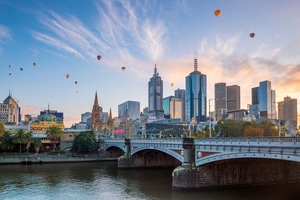Please fill out the details below to receive information on Blue Wealth Events
"*" indicates required fields

In July, REA (realestate.com.au) released data on 46 suburbs which achieved seven-figure median price tags in the 2019-20 financial year. More than half of them are in Melbourne, which is welcome news to those fretting the possible consequences of coronavirus’ second spike. The remainder of the list is dominated by New South Wales and Queensland.
The inner suburbs of Melbourne fared well last financial year, with familiar names such as Blackburn, Brunswick East, Cheltenham, Coburg, Collingwood, Flemington, Maribyrnong and Preston joining the million-dollar list to the benefit of hundreds of our clients.
For the likes of Coburg, Brunswick East and Collingwood, this signals a return to their golden era of house prices ahead of the uncertainty caused by the 2017-19 banking royal commission and other factors. Despite that uncertainty, unit prices in these suburbs have seen modest but consistent performance year-on-year. REA data shows a stable pandemic-era median unit price ranging between $495,000 and $520,000 in Coburg. Brunswick East has actually seen growth, albeit a modest 1 percent, in median unit price since the pandemic began. In Collingwood, the story is even better. There, the median unit price has grown 5.5 percent during the pandemic.
Those invested in the Western Sydney suburb of Northmead will be pleased to hear it has rejoined the million-dollar list; as have Brisbane’s West End and Clayfield. In addition, Ashgrove and Grange are among others joining the million-dollar list from Brisbane for the first time.
Positive performance in Brisbane follows a frustratingly prolonged stagnation in parts of the city, with sentiment impacted by a series of factors such as the 2011 floods, resources downturn and credit crunch, as well as fluctuations in supply while the city attempted to manage the requirements of its swelling population. Prior to coronavirus, the outlook for Brisbane was extremely positive. This was largely attributed to years of reduced housing supply, unparalleled affordability and attractive lending conditions. It’s great to see that despite coronavirus, Brisbane has managed to hold its own.
